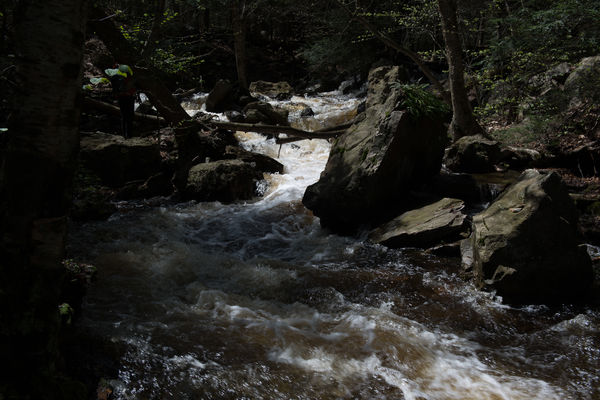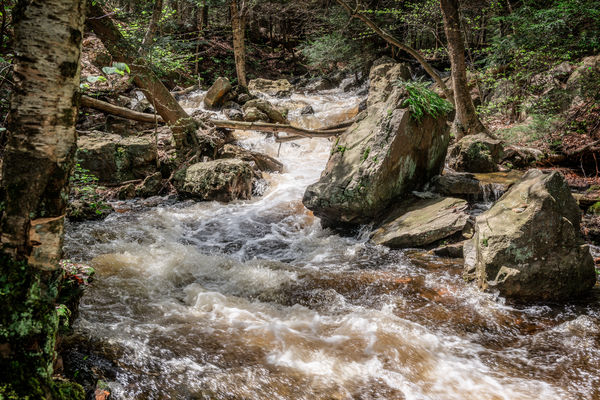Dynamic Range Issue?
Dec 12, 2017 06:59:23 #
The Villages
Loc: The Villages, Florida
I have a D300s with a Nikon 18-200mm lens. A majority of the pics are sharp....that's not the problem. The problem (if there is one) is that it seems like in PP I'm always having to pull out the shadows.
When I took the pictures my review of the LCD screen along with the histogram looked good (or at least reasonable), but after downloading, the pictures are often darker then my initial review showed.
What am I doing wrong, or is this not uncommon?
As always, thanks for your insight.
When I took the pictures my review of the LCD screen along with the histogram looked good (or at least reasonable), but after downloading, the pictures are often darker then my initial review showed.
What am I doing wrong, or is this not uncommon?
As always, thanks for your insight.
Dec 12, 2017 07:13:34 #
Do you take your photographs in the RAW file format? If so then you can expect to see a result needing work to bring out its potential.
Yes, a "review of the LCD screen along with the histogram" may show a properly exposed photography. Note that the camera produces a JPEG file of the captured photograph for display on the LCD screen. This display therefore may not represent the finished photograph.
The Histogram more truly represents the exposure of the photograph. The LCD screen, however, can show "blinkies" that indicate overexposure of the highlights.
I hope this reply helps. Others here may give you a better explanation.
Yes, a "review of the LCD screen along with the histogram" may show a properly exposed photography. Note that the camera produces a JPEG file of the captured photograph for display on the LCD screen. This display therefore may not represent the finished photograph.
The Histogram more truly represents the exposure of the photograph. The LCD screen, however, can show "blinkies" that indicate overexposure of the highlights.
I hope this reply helps. Others here may give you a better explanation.
The Villages wrote:
I have a D300s with a Nikon 18-200mm lens. A major... (show quote)
Dec 12, 2017 07:28:03 #
Dec 12, 2017 07:28:44 #
The Villages wrote:
I have a D300s with a Nikon 18-200mm lens. A major... (show quote)
Same experience. Histogram will show the truth where the exposure is from a math perspective. The LCD screen will lie, your monitor will lie, your prints will lie, and your smartphone will tell you a different lie each day ;-)
Seriously, brightness of the screens, jpeg vs raw and which printer you use will all affect perceived exposure. Calibration helps. Otherwise, take a few test shots and check the LCD screen on camera, your monitor and your smartphone against a good histogram and do what you can to get them all to agree.
...this is one time where getting aĺl the liars in a room to get their story straight is an advantage vs a cause for a mistrial...
Dec 12, 2017 07:31:31 #
The Villages
Loc: The Villages, Florida
anotherview wrote:
Do you take your photographs in the RAW file forma... (show quote)
Should have mentioned, I shot JPEGs.
Dec 12, 2017 08:01:30 #
The Villages wrote:
Should have mentioned, I shot JPEGs.
If you have a wide dynamic range, much depends on where you focus. If you using evaluative/matrix it samples and averages everything. Usually that will cause everything to get compromised and not always in a positive way. With a wide range one will usually set focus for bright side so you don't blow out the whites. Onr the whites are blown the shot is done. While the whites come out correct the blacks will be dark but they can be brought out with the shadow slider in post. With jpg sorry to say, you have the least opportunity only having 8 bits of data.
Sensors will capture a range of 5-6 stops but unless you shoot raw you limit your editing abilities.
As other have said, stare at the histogram to increase your odds. if you are expecting to get SOOC photo, with a wide range of stops, it's not going to happen. All you do is settle. These situations lend themselves to HDR processing.
Dec 12, 2017 08:18:06 #
As you have already seen this is a complex subject and it is subjected to several variables. Yes, dynamic range could be one of them. Improper or lack of monitor calibration as mentioned is another one.
You never should assume that what you see in the monitor is an actual representation of real life. Monitors are not calibrated. Histograms are excellent guides for the exposure only.
It is very possible that you will have more information in the shadow areas (depending on subject) when using RAW but even so you could end up opening the shadows. Make some tests exposing for the shadow areas closing one stop from meter reading and see if when you download the image to the monitor it looks better. Digital is pretty sensitive to light and the general concensus is to always expose for them if they are an important part of the subject. Meter for the shadow areas only when they are the main subject.
The reason for closing one stop from meter reading of the dark areas is because meters average the scene to a middle tonality.
You never should assume that what you see in the monitor is an actual representation of real life. Monitors are not calibrated. Histograms are excellent guides for the exposure only.
It is very possible that you will have more information in the shadow areas (depending on subject) when using RAW but even so you could end up opening the shadows. Make some tests exposing for the shadow areas closing one stop from meter reading and see if when you download the image to the monitor it looks better. Digital is pretty sensitive to light and the general concensus is to always expose for them if they are an important part of the subject. Meter for the shadow areas only when they are the main subject.
The reason for closing one stop from meter reading of the dark areas is because meters average the scene to a middle tonality.
Dec 13, 2017 08:26:51 #
Suggest you look at Hog member Steve Perry's video on Histograms. BackcountryStudio.com or Google Steve Perry Histogram. You have to understand the limitations of Histograms, especially when shooting images with a lot of dark or bright tones... Experience and some knowledge will help you greatly.
Best,
Todd Ferguson
Best,
Todd Ferguson
Dec 13, 2017 14:50:18 #
Yes, color calibration of your computer's monitor will help to achieve true color in your photographs onscreen.
crazydaddio wrote:
Same experience. Histogram will show the truth whe... (show quote)
Dec 13, 2017 17:02:28 #
The Villages wrote:
JPEG does narrow your Dynamic Range, but your camera may not be using all the JPEG provides. If the histogram doesn't go all the way to the right, you may have to go to a wider aperture / slower shutter speed, perhaps via Exposure Compensation, and then darken only the lighter part of the image in PP.Should have mentioned, I shot JPEGs.
Dec 13, 2017 17:17:27 #
The Villages wrote:
I have a D300s with a Nikon 18-200mm lens. A major... (show quote)
Village, if there is a bright light source in your shot, you WILL have a DR issue, with ANY camera, Jpeg or Raw! Just the way it is.
Shadows are shadows, that's why we call them shadows. Good luck making them go away.
The ONLY way to solve that is to shoot multiple HDR sequence shots. Good luck
SS
Dec 13, 2017 17:19:18 #
Joe Brady and Sekonic have some videos on exposure metering for landscapes and portraits on YouTube. They might help you with better understanding of exposing high dynamic range scenes...
Best,
Todd Ferguson
Best,
Todd Ferguson
Dec 13, 2017 22:18:46 #
The Villages wrote:
I have a D300s with a Nikon 18-200mm lens. A major... (show quote)
Use the histogram and the "blinkies" display to get the exposure you want. That will give proper highlights.
If the shadows are not what you want the Picture Controls adjustment for contrast needs to be adjusted. Less contrast will lighten the shadows.
Do NOT use Matrix metering. And do NOT stop down even further as that will make it worse.
Dec 13, 2017 23:47:10 #
The Villages wrote:
I have a D300s with a Nikon 18-200mm lens. A major... (show quote)
It does sound like you are not doing anything wrong, and there is a good chance that however you arrive at your exposure settings, you probably aren't blowing your highlights. Blown highlights, unlike mildly underexposed shadows, cannot be recovered. I often shoot in high contrast situations - which require me to tone down the highlights, lift the shadows, and sometimes adjust exposure to bring the tonal balance back to something reasonable. If you have the time, post an example of an unedited image with "store original" checked.
Dec 14, 2017 05:54:29 #
The Villages wrote:
I have a D300s with a Nikon 18-200mm lens. A major... (show quote)
As far as metering is concerned, there is no "correct" or "incorrect" way, as long as you fully understand what the meter is measuring and how your approach is going affect your final image.
If you use in camera matrix or center weighted, you'll find that these work best in low to average contrast situations. In most cases you will get a good exposure.
You can use a gray card or an incident meter, to determine exposure, but a)you need to be able to place the card or meter in the same light as the subject, which may not be possible, and b)you will be accepting the notion that the card or incident meter, which are balanced to produce a reading that will result in a middle tone, which will work for a wide variety of scenes and is the golden standard for studio work where there is control over the lighting. However, the system fails in extreme contrast situations, resulting in blown highlights.
When using either of the above methods, it's best to turn on the highlight warning on the playback display which will show highlights as blinking, and the histogram view, which will also show you how exposure is distributed for your picture. Be prepared to make use of the exposure compensation dial, or shoot in manual mode, when using either of the above.
You can use a spot meter, either in the camera (most have decent spot meter modes), or a hand-held one. Among other tones you can precisely measure highlights. If you were to use the reading without compensation, your highlights will be middle gray. But if you add 1-1/3 stops additional exposure, those highlights will be nice and bright, and still have readable and recoverable details. This my preferred method, other than using a flash meter in studio settings, which is essentially an incident meter capable of triggering the flash heads and reading the light.
When you get comfortable with the spot metering method you'll find it is very precise, which makes the results very predictable. Once you understand exactly how much +exp comp you can add before blowing important hightlights you can just point, measure and shoot while seldom needing to check the preview or histogram.
As far as images coming out too dark and needing to recover shadow areas in post processing, it happens. A lot.
Here is an example of an unmodified image, captured as a raw file, and the same image after adjustment. It was a test shot to check lighting levels and water movement.
If you want to reply, then register here. Registration is free and your account is created instantly, so you can post right away.











